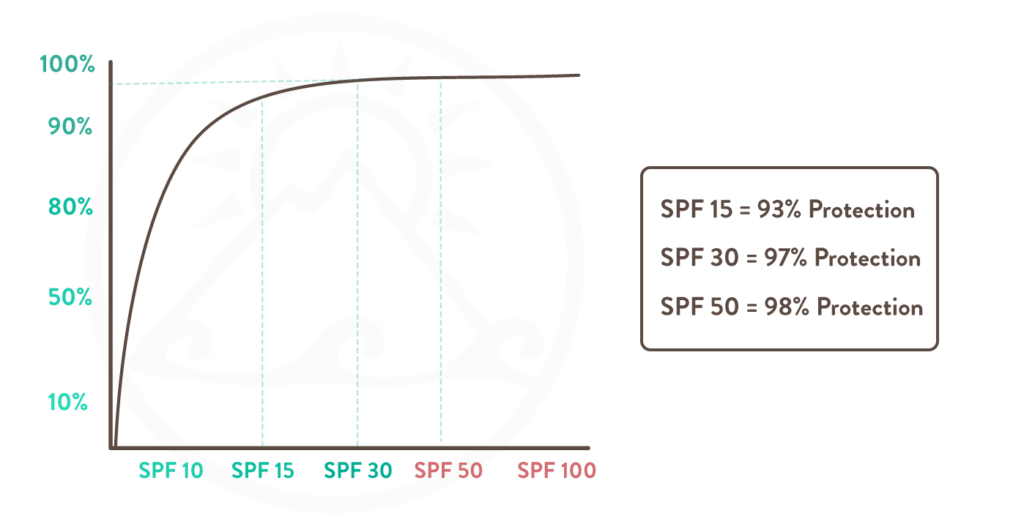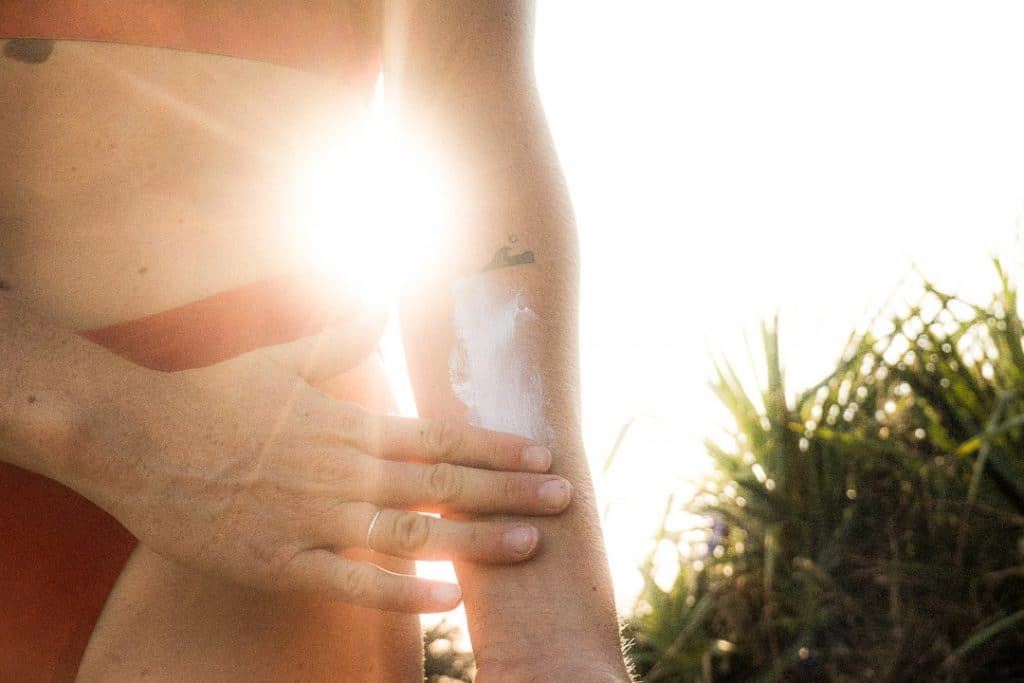"Properly applied SPF 50 sunscreen blocks 98% of UVB rays, while an SPF 30 sunscreen blocks 97% of sunburn rays – the difference being one percentage point."
SPF stands for Sun Protection Factor and is used to rate sunscreen. Applying sunscreen protects us from skin damage, and protects against skin aging too. In theory, an SPF 50 sunscreen would allow users to stay out in the sun 50 times longer than they normally could without sunscreen, while SPF 30 implies users can stay out 30 times longer before getting sunburned. It seems intuitive to go for SPF 50 for more protection, but for high SPF sunscreens, theory and reality are two different things.
People often assume they are given almost twice the amount of protection by applying an SPF 50 sunscreen compared to one that has SPF 30. This is not true, since the extra protection offered by a higher SPF value is negligible after SPF 15. Properly applied SPF 50 sunscreen blocks 98% of UVB rays, while an SPF 30 sunscreen blocks 97% of sunburn rays – the difference being one percentage point.

What is the problem with high SPF sunscreens?
Stating an SPF number higher than 30 on a sunscreen is a sales trick that lures people into a false sense of security. So, let’s dive into some of the research that has been conducted on the topic.
An SPF test conducted for Procter & Gamble illustrates the problem of high SPF: they tested a sunscreen with SPF 100 at five different laboratories. It turned out the SPF results varied between SPF 37 and SPF 75 (interestingly, the sunscreen was not tested as SPF 100 at any of the labs). The explanation was that minuscule differences in testing conditions can dramatically change the result. For instance, a 1.7% change in light transmission can result in a measured SPF of 37 instead of 100, and small variations in the amount of sunscreen applied can result in similar discrepancies between test results. Because the SPF scale is non-linear, the fluctuation in test results become higher the higher the SPF.

What is the difference between UVB and UVA rays and why does it matter?
A product’s actual sun protection is determined by its ability to protect you from both UVB and UVA rays. UVB rays make you tanned, and too much exposure to them has been correlated to the emergence of skin cancer. UVA rays suppress the immune system, lead to the creation of harmful free radicals in the skin, and exposure to them may also lead to skin cancer. Unlike UVB rays, UVA rays do not make you tanned or redden your skin. Therefore, it is impossible to know whether you have been exposed to a risky amount of UVA rays.
The problem with high SPF sunscreens (including sweat-resistant and water-resistant sunscreens) is that SPF value has little to do with a product’s ability to protect against skin damage and shield it from UVA rays. Since the chemical compounds many sunscreen manufacturers use for sun protection do not mix well together, SPF 50 sunscreens are often unable to protect the user from harmful UVA rays. Zinc oxide – the compound used in Suntribe’s sunscreen – is a mineral UV radiation filter that offers natural protection against both UVA and UVB rays.

Health risks associated with high SPF sunscreens
Products with a high SPF may come with significant health risks, since the concentration of UV-filtering chemicals is much higher than in products with lower SPF values. Some of the ingredients used in SPF 50 products have been linked to tissue damage and hormone disruption, while others can trigger allergic skin reactions. Since high SPF products (compared to SPF 30 and lower) have not been shown to provide significantly more sun protection, the higher exposure to potentially harmful chemicals may not be worth it. Therefore it makes sense to choose a broad-spectrum sunscreen with a lower SPF that will protect you from 97% of UVB rays, and has the ability to shield you from harmful UVA rays also.
High SPF sunscreens and the environment
Since an SPF value higher than 30 can only be achieved through adding chemicals or by using titanium dioxide and/or nano zinc oxide (both of which are not as safe for the environment and the skin as non-nano zinc oxide), high-SPF sunscreens don’t only have the aspect of harming human health, but can also be a threat to the environment. When sunscreen is applied and you go swimming in the ocean or you take a shower, it washes off your skin and ends up in your surroundings. This, for example, could be damaging coral reefs, threatening their health by bleaching their tissue and endangering the integrity of ocean life. Keep in mind that waste water and the chemicals within it end up in the environment too.

The future of SPF
As a final case in point, it is worth mentioning that the EWG – a non-profit environmental research organisation specialising in sunscreen products – are of the opinion that manufacturers should stop selling high SPF products altogether. Australian authorities have already put a cap on SPF values at 30, and European and Japanese regulators at 50. Even though such policy decisions have not yet been implemented in the USA, the FDA is currently working towards implementing similar caps.
For these reasons, Suntribe only offers SPF 20 and SPF 30 sunscreens, with non-nano zinc oxide as a natural, mineral UV-filter. Our sunscreens are a lovely mix of that and organic oils, butters and waxes to grant you a smooth consistency, water resistance, protection from 94 to 97% of all UVB rays, plus superb protection from UVA rays. At Suntribe, it is our mission to provide you with worry-free sunscreens.
Shop Suntribe products on Bower Collective.
Written by Karl Roos – January 12, 2020
